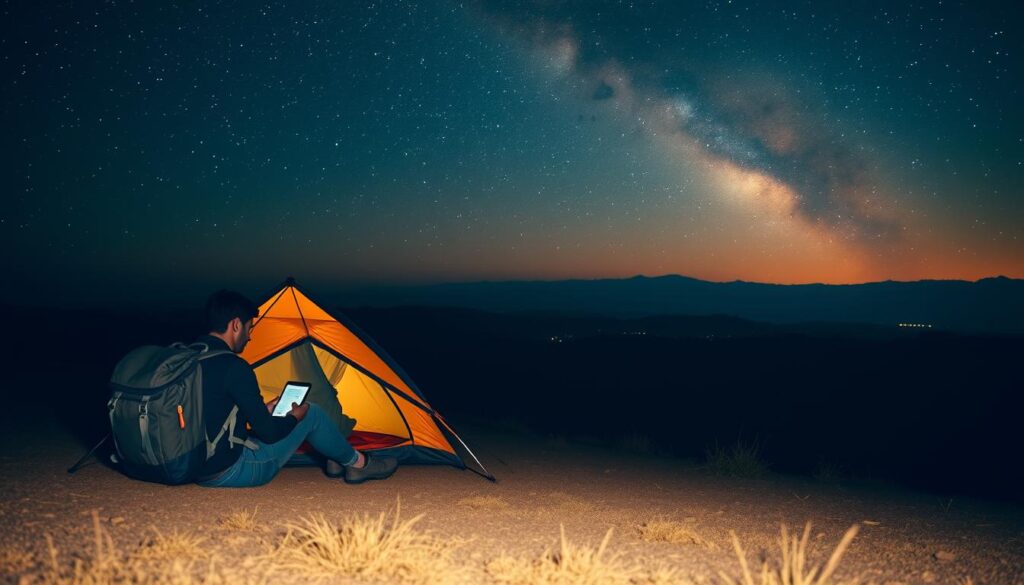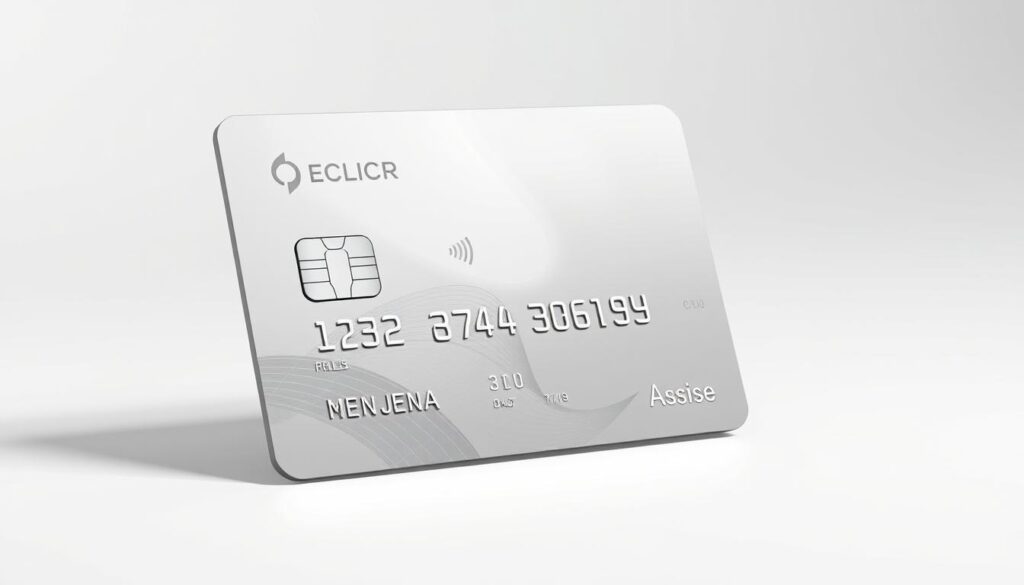Living a location-independent lifestyle comes with unique challenges, especially when it comes to staying protected. Standard health insurance often falls short for those constantly on the move. Whether you’re a digital nomad or a frequent explorer, having reliable coverage is non-negotiable.
Many countries, like Thailand, require proof of coverage with minimum limits—sometimes up to $50,000. Without proper insurance, unexpected medical bills or lost gear can derail your adventures. Providers like SafetyWing and World Nomads offer flexible plans tailored to remote workers.
This guide compares comprehensive policies and budget-friendly options. You’ll learn about subscription-based plans, adventure sports riders, and common misconceptions about overseas healthcare costs. Stay prepared, no matter where your journey takes you.
Key Takeaways
- Standard health plans often exclude coverage for international travelers.
- Some countries mandate minimum insurance limits for visa approval.
- Subscription-based policies adapt better to changing travel schedules.
- Adventure activities may require additional coverage riders.
- Medical emergencies abroad can lead to steep out-of-pocket costs.
Why Digital Nomads Need Specialized Travel Insurance
A single accident overseas can turn into a financial nightmare without the right protection. For digital nomads, standard health plans rarely cover emergencies abroad or remote work activities. Countries like Thailand mandate proof of insurance digital nomads must have—up to $50,000 in coverage for visa approval.
The Risks of Going Uninsured
Imagine a scooter accident in Bali leaving you with an $18,000 hospital bill. Without coverage, you’d pay out of pocket. Worse, emergency evacuations average $25,000–$250,000.
“72% of nomads under 35 skip insurance initially—until they face a crisis.”
Visa denials also loom. Many nations reject applications lacking proper documentation. Lost laptops or stolen gear? Standard policies often exclude them.
How Traditional Plans Fall Short
Typical international health insurance has glaring gaps:
- No coverage for pre-existing conditions
- 180-day limits on home country visits
- 43% higher claim rejections for overseas care
Switching countries monthly? Most plans won’t adapt. Routine dental or vision care? Rarely included. For digital nomads, specialized policies fix these flaws.
Travel Insurance vs. International Health Insurance: Key Differences
Navigating protection options abroad requires understanding key policy differences. While both offer safety nets, their scope, costs, and flexibility vary significantly. Here’s how to choose what fits your lifestyle.
Coverage Scope Comparison
Travel insurance focuses on emergencies: hospital stays, evacuations, or lost gear. It’s ideal for short trips but rarely covers routine care. For example, SafetyWing’s Nomad Insurance starts at $56.28 for 4 weeks.
International health insurance includes preventive services like checkups and prescriptions. Genki Native even allows 180-day home country visits. However, it’s pricier and may exclude adventure sports.
Cost and Duration Differences
Budget matters. Travel policies average $45/month but max out at 1 year. Long-term health insurance renews indefinitely but costs $300/month or more. Geographic restrictions also apply—some plans exclude high-risk regions.
| Feature | Travel Insurance | International Health Insurance |
|---|---|---|
| Emergency Care | ✔️ (Up to $250,000) | ✔️ (Higher limits) |
| Preventive Services | ❌ | ✔️ (Dental, vision) |
| Duration | 1 year max | Renewable annually |
| Adventure Sports | Extra rider ($5–$20/month) | Often excluded |
Still unsure? Expert advice can help weigh premiums against potential risks. Your choice hinges on how long you’ll roam and what risks you’ll face.
Top Features to Look for in Digital Nomad Insurance
Not all policies are created equal—key features make or break coverage for global workers. Whether you’re hopping between continents or settling temporarily, your insurance policy must address unique risks like geopolitical instability or gear theft.
Global Coverage and Country Restrictions
Some plans exclude high-cost regions like the USA or conflict zones. IMG Global stands out by covering 150+ adventure activities worldwide, but always check for surcharges. For example, PassportCard’s direct-payment system simplifies claims in 130 countries.
- Blacklisted areas: Certain nations void coverage unless you pay extra.
- COVID-19: Verify if testing or quarantine stays are included long-term.
- Telehealth: 24/7 remote consultations can prevent minor issues from escalating.
Pre-Existing Condition Policies
Chronic ailments often trigger claim denials. Look for plans like Genki Native that offer managed care options for diabetes or hypertension. Dental emergencies vary too—$1,500 limits won’t cover root canals abroad.
“73% of nomads with asthma skip declaring it, risking denied claims later.”
Emergency Evacuation and Repatriation
Helicopter evacuations average $25,000, while ground transport costs less but isn’t always feasible. Ensure your medical coverage specifies:
- Political evacuation triggers (e.g., sudden coups).
- Pet relocation if you’re hospitalized long-term.
- Gear replacement within 48 hours for stolen work devices.
Prioritize comprehensive coverage that aligns with your destinations and health profile. A tailored plan beats generic fixes in a crisis.
SafetyWing: Best for Flexible, Subscription-Based Coverage
Monthly plans beat rigid annual contracts for unpredictable travel schedules. SafetyWing’s nomad insurance adapts to your movements, whether you’re hopping between continents or settling briefly. Their two main options—Nomad Insurance and Remote Health—cater to different needs.

Nomad Insurance vs. Remote Health
Nomad Insurance covers emergencies like hospital stays and evacuations, starting at $56.28/month. Remote Health, at $165/month, adds preventive care and higher limits—up to $1.5M. Key contrasts:
- Telemedicine: Both include 24/7 remote doctor visits.
- Adventure sports: Add a rider for $5–$20/month.
- Family plans: Save 35% with Nomads Embassy membership.
Pricing and Unique Benefits
SafetyWing’s subscription model avoids upfront annual fees. Claims now process faster—often within 48 hours. But note:
- Coverage gaps: Excludes Singapore and Hong Kong.
- Maternity care: Only Remote Health includes it after 12 months.
- COVID tests: Reimbursed up to $50 per test.
“Remote Health’s cancer treatment coverage is rare among insurance companies targeting digital nomads.”
Workspace liability? Covered. Need gear protection? Nomad Insurance includes $3,000 for stolen laptops. For insurance digital nomads trust, SafetyWing balances cost and flexibility.
Genki: Affordable and Hassle-Free Insurance
Budget-conscious travelers need protection that doesn’t break the bank while covering critical risks. Genki delivers with plans starting at just €48.30/month, making it a top pick for digital nomads prioritizing value. Their mobile-first approach eliminates paperwork—you can file claims instantly through their app.
Genki Explorer vs. Genki Native
The Explorer insurance plan covers emergencies like hospital stays and evacuations, ideal for short-term travelers. Upgrade to Native for health coverage including routine checkups, but note the 55-year age limit. Both exclude the USA unless you add a rider.
Key differences:
- Native includes dental cleanings (€150/year) and mental health sessions (up to 20/year).
- Explorer covers motorcycle accidents—rare in budget plans.
- Price locks last 12 months with Native versus 6 months for Explorer.
Budget-Friendly Advantages
Genki cuts costs without compromising essentials. Their basic plans have zero deductibles, and vision care add-ons cost just €8/month. Lost gear claims require police reports but process within 48 hours.
“Renewals after claims won’t spike your premiums—a game-changer for accident-prone travelers.”
While not the most comprehensive insurance for high-risk destinations, Genki balances affordability with reliable protection. Home country visits are limited to 30 days annually, so verify exceptions before buying.
World Nomads: Top Choice for Adventure Travelers
Exploring remote jungles or scaling mountains demands specialized coverage most policies lack. World Nomads steps in with protection for insured nomads tackling extreme sports or unpredictable terrains. Their plans cover 200+ activities, from scuba diving to sandboarding, with a $10M emergency evacuation limit.
Sports and Activity Coverage
Not all thrills are treated equally. Rock climbing gear gets replaced, but only if you use certified guides. Scuba diving? Covered up to 30 meters—deep-sea expeditions need extra riders. Safari-goers must show proof of vaccinations, while festival injuries might require attendance verification.
Key inclusions:
- Camera equipment: Up to $1,000 for stolen DSLRs (police report required).
- Natural disasters: Evacuation flights during hurricanes or earthquakes.
- Extreme sports: Add $5–$20/month for base jumping or cave diving.
High-Limit Protection Options
Political unrest? World Nomads evacuates you if governments issue travel bans. Their travel insurance also covers:
- Trip interruptions (proof of delay needed).
- Emergency dental work for knocked-out teeth mid-adventure.
- Visa support letters expedited within 24 hours.
| Feature | Standard Plan | Explorer Upgrade |
|---|---|---|
| Adventure Sports | 150+ activities | 200+ (includes competitions) |
| Gear Protection | $500 limit | $3,000 (covers rentals) |
| Medical Expenses | $100,000 | $250,000 + telehealth |
“Their $10M evacuation saved a climber stranded on Everest—$85,000 helicopter bill covered.”
For adventurers, World Nomads is a great option blending flexibility with robust safeguards. Just read the fine print on depth limits and guide requirements.
Insured Nomads: Comprehensive Global Plans
Global explorers need protection that adapts to unpredictable journeys and high-risk destinations. Insured Nomads delivers with insurance policies covering 190+ countries, including $2M annual protection ceilings. Their World Explorer series stands out with rare perks like airport lounge access during medical evacuations.
World Explorer Series Breakdown
The Platinum tier offers $10,000 for dental trauma—crucial for adventurers facing accidents. Business equipment gets $5,000 coverage, while trip delays trigger $250/night hotel allowances. Family plans cover children up to age 26, a rare inclusion for insured nomads.
Unique to this insurance provider: 24/7 crisis response teams handle kidnap/ransom situations. Pandemic-related quarantines are covered for up to 30 days, and missionary work receives special exceptions.
Specialized Coverage Highlights
War zones require extra documentation, but Insured Nomads processes claims within 48 hours. Cruise ship medical care includes airlift services, while pre-existing condition waivers need 90-day stability proof.
“Lounge access during evacuations reduces stress—we’ve had clients recover faster knowing they’ll wait comfortably.”
Their customer service team specializes in high-stakes scenarios, from lost passports in conflict areas to emergency prescription deliveries. For global citizens, these tailored solutions transform risks into manageable variables.
PassportCard: Real-Time Payment Convenience
Imagine swiping a card instead of filling endless claim forms. PassportCard simplifies medical coverage with instant payments at 130+ global clinics. No reimbursements, no waiting—just direct billing for emergencies and routine care.

How the Card System Works
Activate your card within 48 hours of approval. Use it like a debit card at partnered hospitals, pharmacies, or even for emergency cash advances. Lost it? Free replacements ship within 5 business days.
Key perks:
- Wellness discounts: 15% off gym memberships and health screenings.
- Pre-authorizations: Skip paperwork for prescriptions or physical therapy.
- Cancer treatment: Full approvals if diagnosed post-enrollment.
Remote vs. Comfort Plan Comparison
The Remote insurance plan suits short-term travelers with $1M limits. Upgrade to Comfort for $3.5M coverage, including chiropractic care (up to 30 sessions/year) and maternity care after a 10-month wait.
| Feature | Remote | Comfort |
|---|---|---|
| Emergency Evacuation | $500,000 | $1M |
| Dental Trauma | $1,000 | $3,000 |
| Age-Based Premiums | +8% after 50 | +5% after 50 |
“Cardholders save 12 hours per claim—critical during emergencies.”
While costs rise slightly with age, both plans include 24/7 telehealth. For insurance digital nomads trust, PassportCard merges speed with reliability.
IMG Global: Broad Coverage Options
Finding reliable coverage gets trickier with age, but IMG Global removes those barriers. Their plans cover travelers up to 74 years with an $8M lifetime maximum—ideal for long-term international health needs. Whether you’re managing chronic conditions or exploring risky destinations, their policies adapt.
Patriot Lite vs. Patriot Platinum
IMG Global’s two flagship plans cater to different budgets and risk levels. Patriot Lite starts at $120/month, while Platinum offers premium protections like $10,000 dental trauma coverage.
| Feature | Patriot Lite | Patriot Platinum |
|---|---|---|
| Chemotherapy | ✔️ (Up to $1M) | ✔️ (Full coverage) |
| Terrorism Injuries | ❌ | ✔️ ($500,000 limit) |
| Medical Expenses | $5M lifetime | $8M lifetime |
| Evacuation Transport | Commercial flights | Air ambulance included |
Pre-existing Condition Coverage
Few insurance companies handle chronic ailments as comprehensively. IMG Global requires 12 months of stability proof but covers:
- Identity theft assistance: Up to $25,000 for fraud resolution.
- Natural disaster deductibles: Waived if evacuation is mandatory.
- Sports injuries: 30-day waiting period for extreme activities.
“Their multi-language support team resolved a client’s claim in Thailand within 6 hours—no translator needed.”
Wellness check reimbursements ($200/year) and prescription mail-order discounts add extra value. For travelers with pre-existing conditions, IMG Global bridges gaps others ignore.
How to Choose the Right Plan for Your Needs
Over 68% of remote workers waste cash on mismatched plans—don’t join them. High-deductible options save 22% on average, but balancing costs with coverage requires a tailored approach. Start by auditing your itinerary, health needs, and gear risks.
Assessing Your Travel Style and Health Requirements
Not all digital nomad visas accept the same insurance policy. Thailand demands $50,000 minimums, while Croatia requires proof of repatriation. Ask:
- How often do you visit home? Some plans limit stays to 30 days/year.
- Do you need chronic meds? Verify prescription mail-order options.
- Will you ski or scuba? Add adventure riders upfront.
“A client saved $3,000/year by switching to a plan excluding the USA—where they never traveled.”
Balancing Premiums vs. Deductibles
Cheaper monthly fees often mean higher out-of-pocket costs. Compare:
| Plan Type | Monthly Cost | Deductible |
|---|---|---|
| High-Deductible | $45 | $1,000 |
| Low-Deductible | $110 | $250 |
Make sure your electronics’ value aligns with theft limits. For gear over $3,000, explore specialized add-ons like those in best health plans.
Renewal flexibility matters too. Monthly subscriptions beat annual locks if your route changes often.
Common Pitfalls to Avoid When Buying Insurance
Choosing the right protection involves more than comparing prices. Many travelers face unexpected denials or delays due to easily avoidable mistakes. Understanding these traps saves time, money, and stress when emergencies strike abroad.
Watch Out for Country Exclusions
41% of claims get denied because policies exclude certain regions. Some insurance providers blacklist entire continents or require extra fees for high-risk areas. Always verify:
- Visa requirements—some nations mandate specific coverage minimums.
- Dual citizenship rules that might void claims.
- Adventure sport documentation like guide certifications.
Your home country might also have restrictions. Many plans limit visits to 30-90 days annually. Others exclude treatment there entirely.
Claim Process Missteps
Average processing takes 14-90 days, but errors stretch this further. Make sure you:
- Get pre-authorizations for non-emergency care.
- Keep translated receipts if submitting in another language.
- Understand direct billing vs. reimbursement systems.
“Policy upgrades often have waiting periods—a client broke their arm skydiving one day too early for coverage.”
| Pitfall | Consequence | Prevention Tip |
|---|---|---|
| Automatic renewals | Unwanted charges | Set calendar reminders |
| Beneficiary gaps | Payout delays | Update after life changes |
| Fraud flags | Frozen claims | Submit clear documentation |
For insurance digital nomads rely on, these details matter. A great option today might become inadequate tomorrow—review policies annually or after major itinerary changes.
Conclusion
Smart travelers know that proper coverage prevents financial disasters overseas. Whether you’re a digital nomad or an occasional explorer, SafetyWing offers flexibility, while World Nomads protects thrill-seekers.
Always check visa requirements—some countries demand specific travel insurance minimums. Save by opting for higher deductibles or excluding regions you won’t visit.
Keep an emergency fund for unexpected gaps. Review policies yearly—your needs change. Forums like Nomad List share real-user experiences.
Ready to compare plans? Get quotes tailored to your next adventure. With the right health insurance, you’ll roam worry-free.
FAQ
Why do digital nomads need specialized coverage?
Standard policies often exclude long-term stays, remote work risks, or multiple-country trips. Specialized plans fill these gaps.
What’s the difference between travel and health insurance?
Travel policies cover trip interruptions and emergencies, while health plans focus on medical care, including routine check-ups abroad.
Does SafetyWing cover pre-existing conditions?
Their Nomad Insurance excludes chronic illnesses, but Remote Health offers limited coverage after 6 months of continuous enrollment.
How does Genki keep costs low?
Genki Explorer uses a community-rated pricing model, spreading risk across members for stable, affordable premiums.
Can World Nomads insure extreme sports?
Yes, they cover 200+ activities like rock climbing and scuba diving, though some require added premiums.
What makes Insured Nomads stand out?
Their World Explorer plans include mental health support, dental emergencies, and adventure sports in one package.
How fast does PassportCard pay claims?
Their card system provides instant payments at approved clinics, eliminating reimbursement waits for eligible treatments.
Does IMG Global cover COVID-19?
Yes, both Patriot plans include pandemic-related medical costs, but trip cancellation due to outbreaks isn’t covered.
What’s the biggest mistake nomads make?
Assuming all countries are covered—always check exclusions, especially for regions with travel advisories.
Can I extend my policy mid-trip?
Most providers like SafetyWing and World Nomads allow extensions, but you’ll need to request before your current plan expires.


